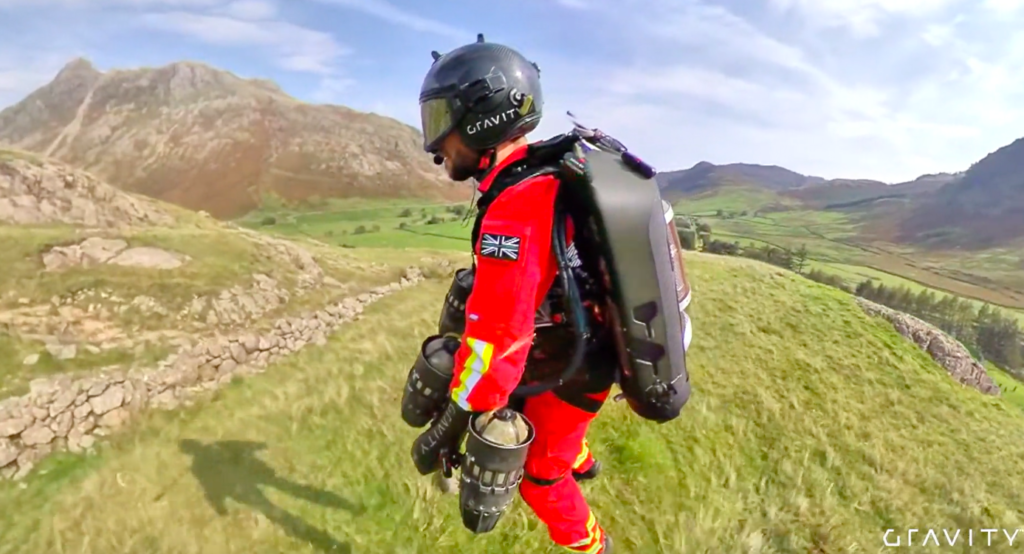Paramedics in the UK have carried out the first test of a jet suit that would get them to people in danger or distress in a fraction of the time it would take by car or foot. The exercise was part of a collaboration between Gravity Industries, which developed the jet pack, and the Great North Air Ambulance Service (GNAAS).

The Lake District is among the UK’s most famous national parks, attracting more than 15 million people ever year. But its wild terrain can be treacherous, leading to several incidents that require the assistance of the team at GNAAS. They are forced to move by vehicle or foot, as helicopters can’t land in the area due to its peaks and valleys.
Looking for potential alternatives, GNAAS engaged in conversations last year with Gravity Industries, founded by Richard Browning. The company recently developed a jet suit with five mini engines. It can reach impressive speeds of up to 85 miles/hour for up to 10 minutes and a maximum altitude of 3,658 meters.
The year-long conversations finally culminated in a recent jet suit test flight, carried out at Langdale Pikes in the Lake District. Browning flew from the valley bottom to a simulated casualty site on The Band, near Bowfell. The whole flight took 90 seconds, which would have required 25 minutes and a steep climb on foot.
“It was wonderful to be invited to explore the capabilities of the Gravity Jet Suit in an emergency response simulation and work alongside the team at GNAAS,” said Browning in a press statement. “We are just scratching the surface in terms of what is possible to achieve with our technology.”
The scenario was that a 10-year old girl had fallen from the cliffs and sustained a serious leg injury. After receiving the coordinates of the casualty, Browning, dressed as a jet suit paramedic, set off across rocky hills and picturesque scenery to successfully reach the girl. The paramedics could then assess her injuries and provide treatment.
Andy Mawson, director of operations at GNAAS, came up with the idea of a partnership with Gravity Industries and described seeing the first trial as an “awesome” experience. He said the exercise had demonstrated the huge potential of using jet suits to deliver critical care services.
“There are dozens of patients every month within the complex but relatively small geographical footprint of the Lakes,” he said in a press statement. “We could see the need. What we didn’t know for sure is how this would work in practice. Well, we’ve seen it now and it is, quite honestly, awesome.”


